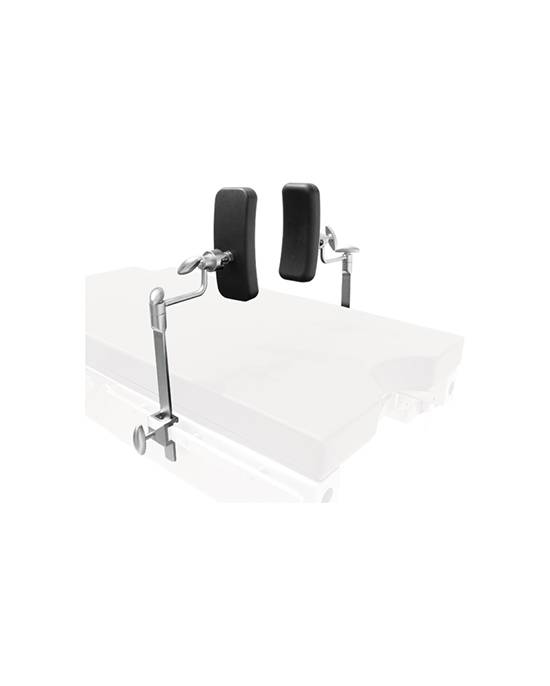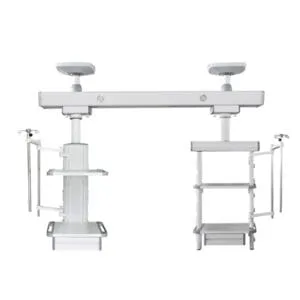Address
304 North Cardinal St.
Dorchester Center, MA 02124
Work Hours
Monday to Friday: 7AM - 7PM
Weekend: 10AM - 5PM
Welcome to My Blog!
Before we dive into the content, I’d love for you to join me on my social media platforms where I share more insights, engage with the community, and post updates. Here’s how you can connect with me:
Facebook:https://www.facebook.com/profile.php?id=100071234835011
LinkedIn:https://www.linkedin.com/company/74943205/admin/dashboard/
YouTube:www.youtube.com/@shandongexpertmedicalequip4695
TikTok:www.tiktok.com/@expertmedical
Now, let’s get started on our journey together. I hope you find the content here insightful, engaging, and valuable.

In modern healthcare facilities, the integration of advanced technologies is crucial for enhancing patient care and safety. Pendant medical equipment plays a pivotal role in this context by providing healthcare professionals with immediate access to essential tools and resources. This comprehensive guide explores the various aspects of pendant medical equipment, including its benefits, applications, and how it contributes to improving patient care and safety.
Pendant medical equipment refers to ceiling-mounted devices that provide medical staff with easy access to critical tools and utilities. These systems are designed to maximize space efficiency and enhance the functionality of healthcare environments. Common components of pendant medical equipment include:
Pendant medical equipment comes in various types, each tailored to specific medical environments and needs. The main types include:
Surgical Pendants: Used in operating rooms to support surgical procedures by providing necessary utilities and instruments. These pendants help organize medical equipment, reduce clutter, and improve accessibility for surgeons and staff, ensuring a more efficient and sterile environment. They are designed to accommodate medical gases, power outlets, and communication ports for seamless integration with surgical workflows.
Anesthesia Pendants: Designed to support anesthesia delivery systems and related equipment. These pendants provide a stable and organized platform for anesthesia machines, gas supply lines, and monitoring devices, ensuring safe and effective administration of anesthesia. Their ergonomic design enhances efficiency by allowing easy positioning and access to critical tools during surgical procedures.
ICU Pendants: Used in intensive care units to provide critical care tools and ensure immediate access to life-saving utilities. These pendants help manage essential medical gases, electrical connections, and patient monitoring systems while keeping the ICU workspace organized. Their flexible and modular designs enhance patient care by allowing healthcare professionals to adjust the setup based on specific patient needs.
Endoscopy Pendants: Tailored for endoscopic procedures, offering specialized support for endoscopy equipment. These pendants provide secure mounting for endoscopic monitors, light sources, and insufflation devices, ensuring a clutter-free and ergonomic workspace. Their adjustable configurations enhance procedural efficiency and improve patient outcomes by streamlining access to critical instruments.


Pendant medical equipment improves accessibility by positioning essential tools and utilities within easy reach of healthcare professionals. This accessibility ensures that medical staff can quickly respond to patient needs, enhancing the efficiency and effectiveness of care delivery.
By organizing and decluttering the workspace, pendant medical equipment reduces the risk of accidents and infections. The streamlined design helps maintain a sterile environment, which is crucial for patient safety, particularly in surgical and ICU settings.
Pendant systems are ceiling-mounted, which frees up valuable floor space. This space optimization is particularly beneficial in crowded or limited-space environments, allowing for better movement and access to patients.
Pendant medical equipment is highly versatile and customizable. Healthcare facilities can tailor the configuration to meet specific needs, ensuring that each pendant system is equipped with the appropriate tools and utilities for the intended medical procedures.
The strategic placement of medical equipment through pendant systems enhances workflow efficiency. By reducing the time spent searching for and retrieving tools, medical staff can focus more on patient care, leading to improved outcomes.
In operating rooms, surgical pendants are essential for supporting various surgical instruments and utilities. These pendants ensure that surgeons have immediate access to necessary tools, medical gases, and electrical outlets, facilitating smooth and efficient surgical procedures.
ICU pendants are designed to support critical care environments by providing immediate access to life-saving utilities and monitoring equipment. These pendants help maintain a sterile and organized workspace, which is crucial for patient safety and care.
Anesthesia pendants are specifically designed to support anesthesia delivery systems. They provide convenient access to medical gases, electrical outlets, and other necessary utilities, ensuring that anesthesiologists can effectively manage anesthesia during surgical procedures.
Endoscopy pendants are tailored for endoscopic procedures, offering specialized support for endoscopy equipment. These pendants ensure that endoscopists have easy access to necessary tools and utilities, enhancing the efficiency and safety of endoscopic procedures.
In emergency rooms, pendant medical equipment supports the rapid and efficient delivery of care. By providing immediate access to critical tools and utilities, these pendants help medical staff respond quickly to emergency situations, improving patient outcomes.
| Pendant Type | Primary Use | Key Features | Typical Applications |
|---|---|---|---|
| Surgical Pendants | Operating rooms | Medical gas outlets, electrical sockets, lighting | Surgical procedures |
| Anesthesia Pendants | Anesthesia delivery | Anesthesia systems support, medical gases | Operating rooms, surgical centers |
| ICU Pendants | Intensive care units | Life-saving utilities, monitoring equipment | ICUs, critical care units |
| Endoscopy Pendants | Endoscopic procedures | Specialized endoscopy equipment support | Endoscopy suites, diagnostic centers |
| Emergency Pendants | Emergency care | Rapid access to critical tools and utilities | Emergency rooms, trauma centers |

Pendant medical equipment streamlines medical procedures by ensuring that all necessary tools and utilities are within easy reach. This organization reduces the time spent searching for equipment and allows medical staff to focus more on patient care.
By decluttering the workspace and organizing medical tools, pendant systems help maintain a sterile environment. This organization reduces the risk of infections, particularly in operating rooms and ICUs, where maintaining sterility is crucial.
Pendant medical equipment ensures that critical tools and utilities are immediately accessible, allowing medical staff to respond quickly to patient needs. This quick response time is particularly important in emergency and critical care environments, where every second counts.
Ceiling-mounted pendant systems reduce the physical strain on medical staff by positioning tools and utilities at an ergonomic height. This ergonomic design minimizes the need for bending, reaching, and lifting, reducing the risk of musculoskeletal injuries.
Pendant medical equipment supports advanced patient monitoring systems, ensuring that vital signs and other critical parameters are continuously monitored. This continuous monitoring enhances patient safety and allows for timely interventions when necessary.
Pendant medical equipment plays a vital role in enhancing patient care and safety in modern healthcare facilities. By providing immediate access to essential tools and utilities, optimizing space, and improving workflow efficiency, these systems ensure that medical staff can deliver the highest standard of care. Whether in operating rooms, ICUs, or emergency departments, pendant medical equipment is an invaluable asset that significantly contributes to improved patient outcomes.
What is pendant medical equipment?
Pendant medical equipment refers to ceiling-mounted devices that provide healthcare professionals with easy access to essential tools and utilities. These systems are designed to maximize space efficiency and enhance the functionality of healthcare environments.
How does pendant medical equipment improve patient care?
Pendant medical equipment improves patient care by streamlining medical procedures, enhancing sterility and infection control, enabling faster response times, reducing physical strain on medical staff, and supporting advanced patient monitoring systems.
What are the different types of pendant medical equipment?
The main types of pendant medical equipment include surgical pendants, anesthesia pendants, ICU pendants, endoscopy pendants, and emergency pendants. Each type is tailored to specific medical environments and needs.
How does pendant medical equipment enhance workflow efficiency?
By positioning essential tools and utilities within easy reach, pendant medical equipment reduces the time spent searching for equipment and allows medical staff to focus more on patient care. This organization enhances workflow efficiency and improves patient outcomes.
Why is space optimization important in healthcare facilities?
Space optimization is important in healthcare facilities because it allows for better movement and access to patients, particularly in crowded or limited-space environments. Ceiling-mounted pendant systems free up valuable floor space, enhancing the overall functionality of the workspace.
